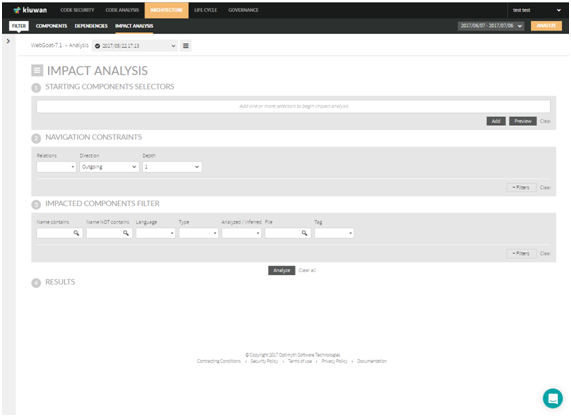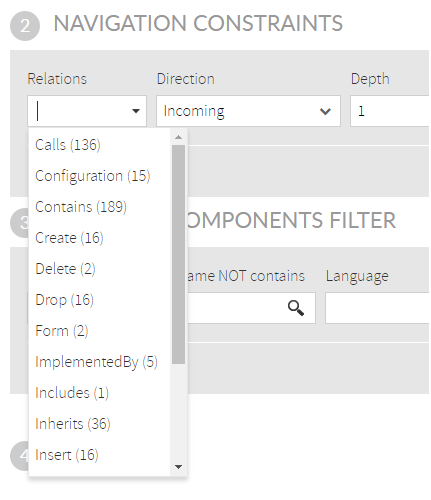...
In order to make the query, Analysis Impact page looks as follows.
Starting Components Selectors
| Info |
|---|
First you must specify Starting (sources) component(s). |
...
Next section will show to you how to do it.
Navigation Constraints
| Info |
|---|
Besides to specify starting components, you can also specify constraints about how to navigate through the relationships. By default, Kiuwan will find any path of any type, but you can restrict those paths. |
Relations
Any relation between components belongs to a certain type.
You can specify what relations should be considered when searching for path between components.
Direction
Besides of a relation type, any relation has a direction: Incoming or Outgoing.
...
| Info |
|---|
In case of doubt, select “Any” and reduce afterwards your search after inspecting the results. |
Depth
A pair of components (A and C) can be connected directly (A-C) or indirectly (through intermediate components, A-B-C).
...
- Relations: empty -> we want all the relations
- Direction: Incoming (or Any) -> those relations going to the tables
- Detph: 1 -> only direct connections
Additional Filters
A pair of components (A and D) can be connected through different intermediate components: A-B-D and A-C-D).
...
For example, if you select Tables as starting points and depth=4, paths will be found that include procedures and classes. But if you were interested only in paths through classes, you could specify it inclufing Type selector and choosing Class type.
Impacted Components Filter
| Info |
|---|
Besides to specify starting components and navigation constraints, you can also specify a filter for impacted (reached) components. |
...
Now, we are ready to run Impact Analysis clicking on Analyze button.
Results
| Info |
|---|
Results section will list all the “impacted” (reached) components, i.e.:
|
...



